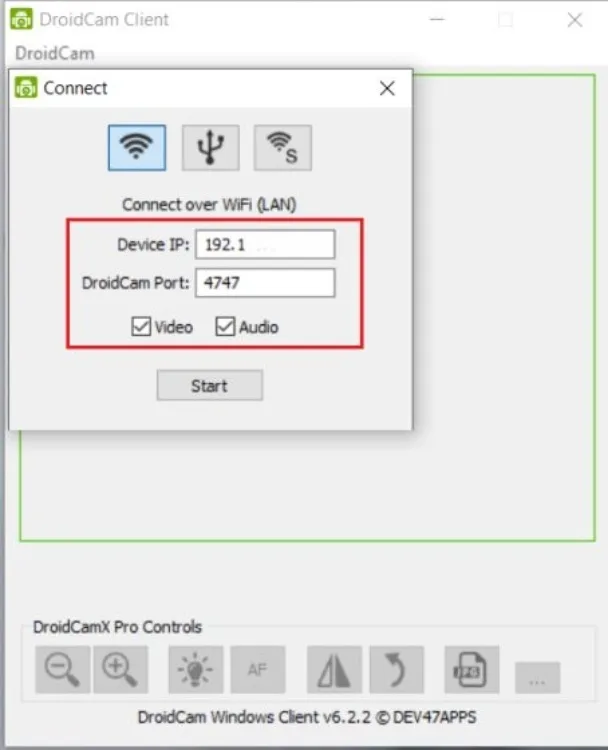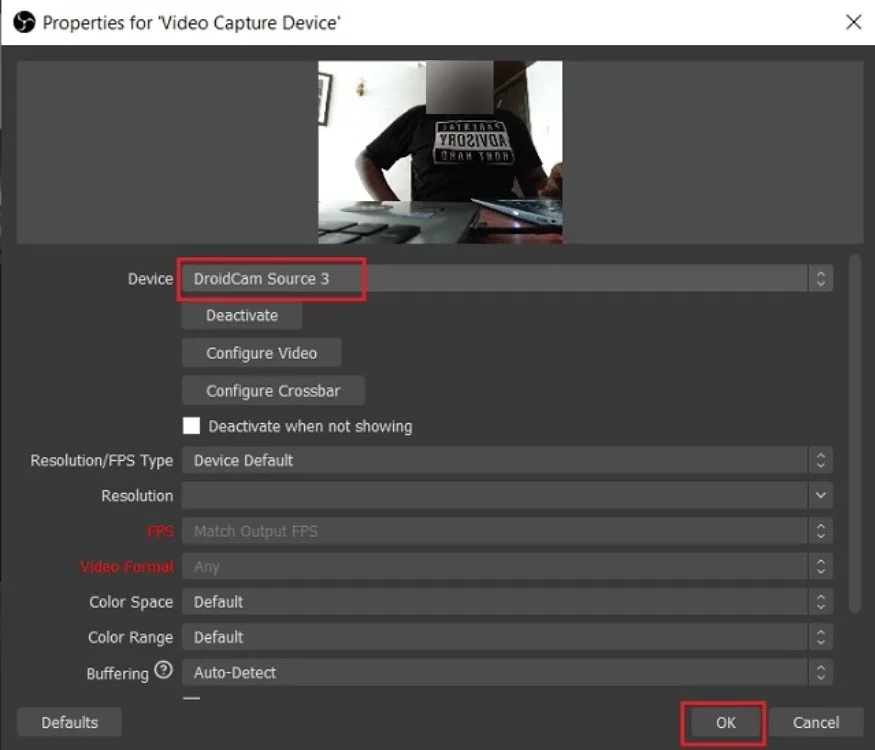
Smartphones are always advancing, now equipped with powerful cameras that surpass many laptop and desktop webcams. Your phone’s camera can be a superb alternative for video calls and recordings. Interested in unlocking this potential? Here are some simple methods to use your phone as a webcam.
Google introduced a new feature in Android 14 that allows you to connect your phone to a laptop or PC and use it as a webcam. This feature currently only works when you connect via USB.
Method 1: Using Device as Webcam Option (Android)
The “Device as webcam” feature is currently supported only on a few Pixel devices running Beta or Developer Preview software. It was included in the Android 14 Quarterly Platform Releases and may be officially introduced in Android 15.
1. Plug in your Android phone to your computer using a USB cable.
2. After connecting, swipe down from the top of your phone’s screen to access the notifications panel, then tap on “USB options.”
3. In the USB Preferences menu, locate the “Use USB for” section and select “Webcam.”

4. To configure the camera settings, swipe down from the top of the screen again to access the notifications panel, then tap on the Webcam notification to preview and configure.
5. A preview screen will appear, showing the live camera footage with options to zoom in, zoom out, and switch between the front and back cameras.

6. Once you’ve configured the camera settings, you can open any video streaming or virtual meeting application on your computer to use your phone’s camera.
This method has been tested on various video conferencing platforms and has proven to be compatible with all of them. Compatibility should not be an issue.
Method 2: Using a Third-Party App (Android)
There are numerous Android apps available that offer webcam functionality for your computer. However, I’ve found DroidCam to be the most reliable and user-friendly option, especially since its basic features are free to use without any watermarks. The app supports both front and back cameras on your smartphone. If you require higher quality video and better FPS support, you can opt for the premium version, DroidCam X, which costs $4.99. It’s worth noting that while DroidCam is available for Windows and Linux, it is not compatible with macOS.
Here’s how you can set up DroidCam:
1. Download and install the DroidCam app on your Android smartphone.
2. Install the desktop client on Windows or Linux from the DroidCam website.
3. Launch the DroidCam app on your Android smartphone to locate and jot down your device’s IP address.

4. Launch the desktop client, enter the IP address in the Device IP field, and enable both “Video” and “Audio.”

5. Click “Start” to begin using your smartphone’s cameras as a webcam. You can minimize the app or lock your smartphone, and the video feed will still work.

Now that your Android device is configured as a webcam, you can use it with Zoom, Skype, Microsoft Teams, Google Meet, and other video conferencing apps. Simply navigate to the video settings in the respective app and select “DroidCam Source” as your video source. Similarly, you can select “DroidCam Virtual Audio” as your microphone source in the audio settings.

You can also use the video feed from your smartphone while streaming games using OBS to your favorite live-streaming platforms. Just select “DroidCam Source” as your video source in OBS.

Method 3: Using a Third-Party App (iPhone)
If you’re looking to use your iPhone as a webcam for streaming or video conferencing, you’ve come to the right place. In this guide, we’ll be using the EpocCam app from the App Store, which works well and is available on both macOS and Windows.
While the app is free, I highly recommend getting the paid version to access some important features. With the free version, you can’t use your iPhone’s microphone and don’t have the option to switch between the front and back cameras. With that said, let’s go through the steps to learn how to use your iPhone as a webcam for web meetings.
1. Download and install EpocCam (Free, Pro version at $7.99) from the App Store. Then, install the driver on macOS or Windows from the EpocCam website. Note that EpocCam does not have a desktop client on macOS but runs and stays active in the background.
2. Open the EpocCam app on your iPhone. Ensure that you do not minimize or dismiss the app, as this will stop the video feed.

3. To test the video feed on Windows, open EpocCam Viewer from the Start Menu to check the stream. For macOS, since there is no dedicated app, you can test the feed through a web browser. Open the provided website and change the “Camera” and “Microphone” settings to “EpocCam” in the address bar.

4. After testing, open any video conferencing app on your computer and navigate to the Settings page. For example, in Zoom, move to the “Video” section and change the camera output to “EpocCam”.

5. You will receive a notification saying “EpocCam connected via Wi-Fi.” Now, you can comfortably use your iPhone as a webcam on your Mac or Windows computer.

6. To use the video feed from your iPhone for streaming purposes, keep the EpocCam app open on your iPhone and start OBS or any other streaming software. Click the “+” icon, choose “Video Capture Device,” and from the “Device” drop-down menu, select “EpocCam Camera.” You’re all set to stream using your iPhone’s camera.Here are two methods you can use to utilize your phone’s camera on a PC. Additionally, we’d like to mention another platform called Scrcpy, which allows you to set up your Android phone as a webcam. Unfortunately, this method only works on Linux, as it functions by creating a dummy device to stream the mirrored camera output from your screen. Scrcpy is also one of the best tools for mirroring your Android screen on Windows or Linux.

Have you successfully used your Android device as a webcam by following the above instructions? Do you know of any better apps we should mention in our next revision of this guide? Let us know in the comments section below.

0 Comments